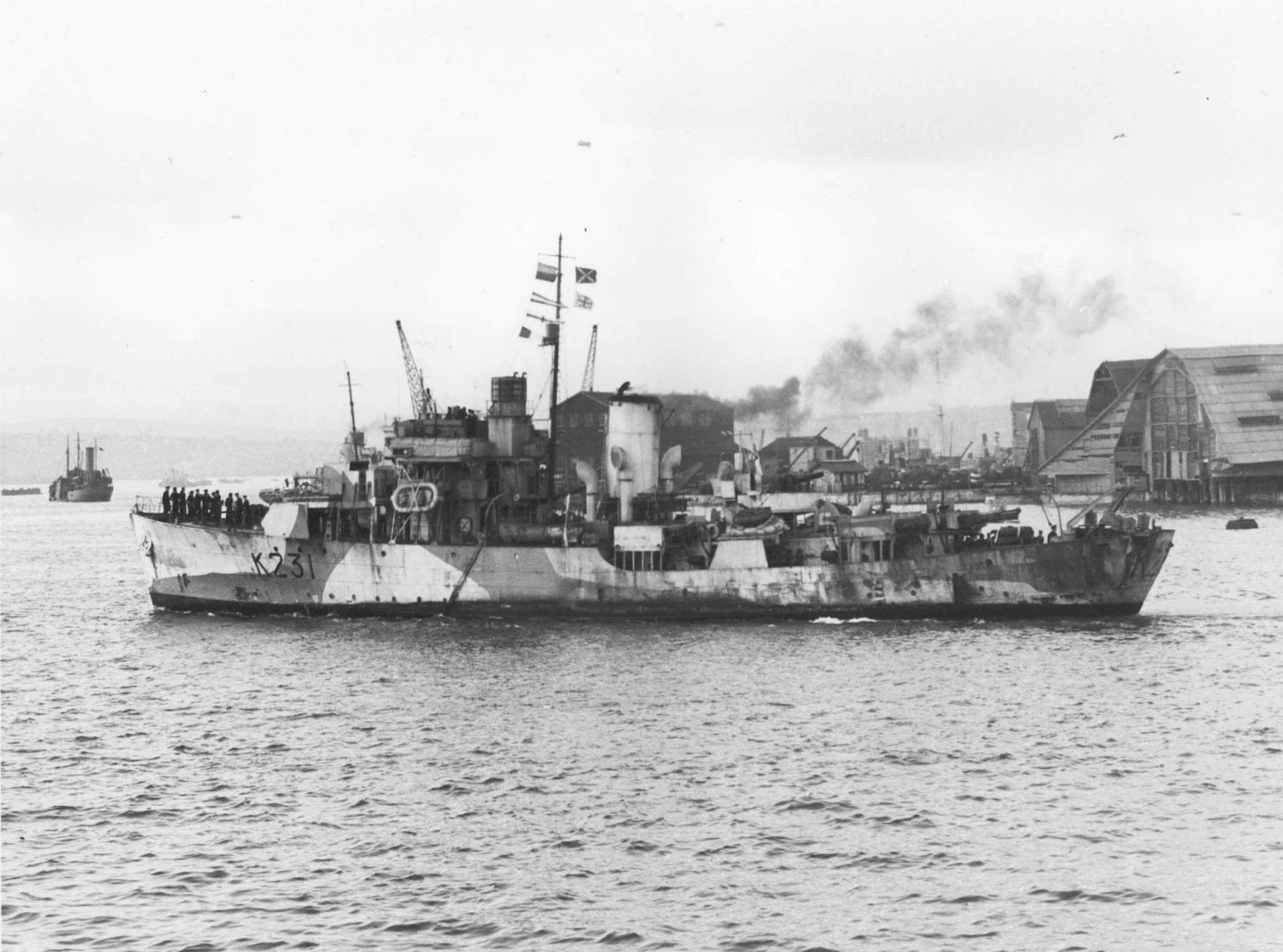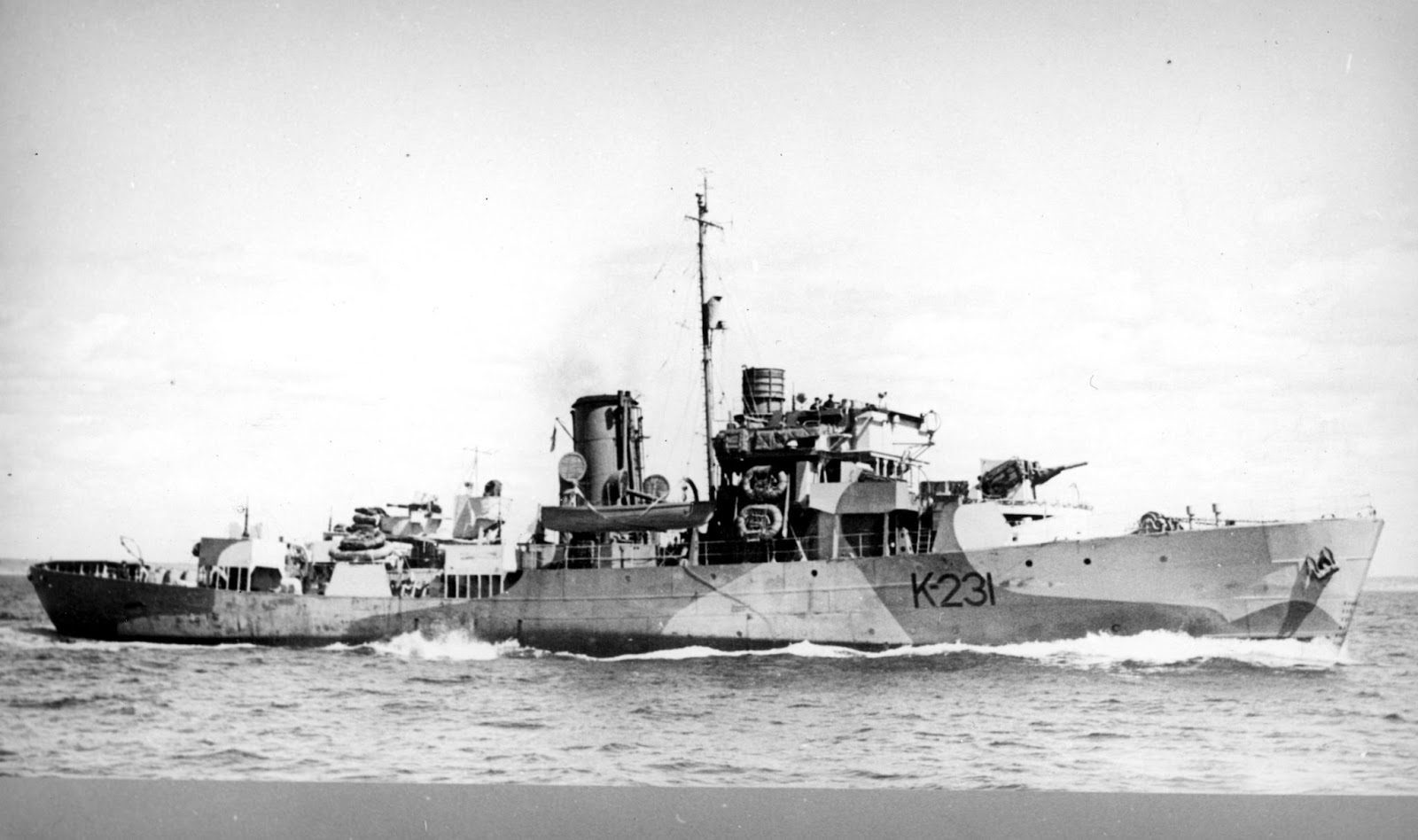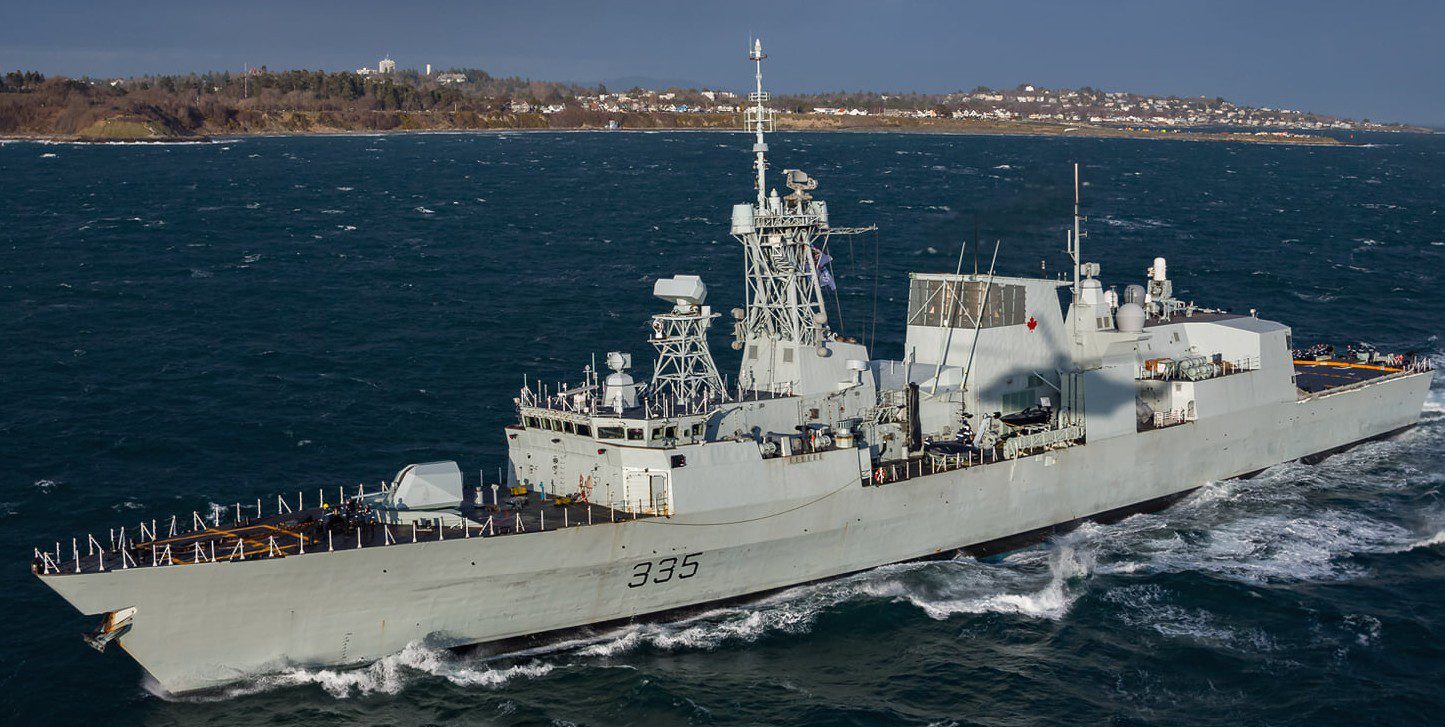HMCS Calgary (K231) is a Flower-class corvette of the Royal Canadian Navy, which participated in escorting convoys during World War II. For the longest time, the ship fought in the Battle of the Atlantic, writes calgary-future.
What are Flower-class Corvettes?
In general, the designation “corvette” was invented by the French in order to name small warships. The Royal Navy of Great Britain once borrowed the term for a period, but in 1877 stopped using it. However, in the run-up to war in the late 1930s, Winston Churchill revived the corvette class, needing a name for the smaller ships. The general name Flower was used to designate a particular type of corvette, a name coined by the Royal Canadian Navy in honor of flowering plants.
The Flower-class corvettes that served during World War II differed from their predecessors. Each ship of the Royal Canadian Navy was named after a community to represent the people involved in its construction. This idea was put forward by Admiral Percy W. Nelles.
Construction
British Royal Navy corvettes were designed for high seas escort, while Canadian corvettes were designed for coastal support roles, so they were equipped with mine countermeasures. Later, Canadian corvettes were modified so that they could also go to the open sea.
On February 20, 1941, the Flower corvette construction program was revised, this updated program radically changed the appearance of the ship. The water-tube boilers of the original 1940-41 program were retained on the ships, but they were placed in separate compartments for better safety. The tank (superstructure in the bow) was lengthened, giving more space for sleeping quarters for the crew, and therefore allowing for an expanded crew. In addition, the ships received two additional depth charge launchers installed in the middle and some depth charges. The armament itself was also updated, in particular, 20 mm anti-aircraft guns were installed on board. All this led to an increase in the displacement and length of the vessel.
HMCS Calgary was laid by Marine Industries Ltd. in Sorel-Trace (Quebec) on March 22, 1941, and the ship was launched on August 23 of the same year.

During the action, the ship underwent two major repairs. The first began in December 1942 after serious mechanical problems while the ship underwent a three-month overhaul. And the second overhaul took place in January-March 1944.
Military service
After arriving at Halifax in December 1941, HMCS Calgary was first assigned to the Western Local Escort Force (WLEF). He remained with these forces until November 1942. During this time, he saved 71 people from the crew of the British merchant ship Pacific Pioneer, which sank near Sable Island.
In November 1942, HMCS Calgary took part in Operation Torch, the invasion of French North Africa as part of the North African Campaign. However, upon arrival in the United Kingdom, the ship developed serious mechanical problems and her first major overhaul began. The vessel never took part in the “Torch” operation.

In April 1943 the ship returned to Canada and rejoined the Western Local Escort Force. In June 1943, he transferred to Escort Group 5 (5th Support Group). On August 23, 1943, as part of this group, he was sent to replace the 40th escort group, which carried out military operations on submarines near Cape Ortegal.
On 25 August, Support Group 5, which included HMCS Calgary and other Canadian ships, deployed to replace Escort Group 40. However, the ships were attacked by the Germans with new German weapons and glider bombs. Several sailors were injured and one sailor died. HMCS Calgary was able to avoid damage. Two more days later, on 27 August, the Canadian 5th Support Group was replaced by the 1st Support Group. These ships were also attacked by the Germans.
On November 20, 1943, the ship dropped a depth charge and sank the rival U-536 northeast of the Azores. In December 1943, HMCS Calgary was transferred to the 6th Support Group.
In May 1944, HMCS Calgary was sent to the United Kingdom, and in June of the same year, she took part in Operation Neptune, the amphibious invasion of Normandy, France. In September 1944, HMCS Calgary was reassigned to Normandy Command and the ship remained there until the end of the war. On December 29, 1944, the ship dropped a depth charge and sank the rival U-322 in the English Channel. After that, the ship was sent for conversion.
Generally, the Battle of the Atlantic, in which HMCS Calgary participated, is the longest continuous military campaign of World War II. It lasted from 1939 until the defeat of Germany in 1945.
The Battle of the Atlantic faced German U-boats and other warships against the British Royal Navy, the Royal Canadian Navy, the US Navy, and Allied merchant ships. Convoys traveling from North America to the United Kingdom and the Soviet Union were protected primarily by the naval and air forces of Great Britain and Canada. They were assisted by US ships and aircraft.
Successor
The second ship named HMCS Calgary and the successor to K231 was HMCS Calgary (FFH 335), a Halifax-class frigate that entered service with the Canadian Armed Forces and the Royal Canadian Navy in 1995.

The building was started back in July 1983. Then the federal government approved a budget for the design and construction of new frigates, one of which was HMCS Calgary. Halifax-type frigates are general-purpose warships with special anti-submarine capabilities.
Ships of this type have a helideck equipped with a “beartrap” system that allows helicopters to be launched and turned at sea. The Halifax class also has anti-submarine weapons, which are launched from twin torpedo tubes. For anti-aircraft self-defense, the ships are armed with a vertical launch anti-aircraft missile. The ship is also equipped with a long-range radar.
HMCS Calgary is assigned to Maritime Forces Pacific (MARPAC). The ship participates in MARPAC missions to protect Canadian sovereignty in the Pacific Ocean and enforce Canadian laws in its territorial sea.
On July 10, 1995, the ship was sent to the Persian Gulf as part of the Iraq Sanctions Enforcement Force. Returning, the ship helped the crew of the sinking bulker Mount Olympus, managed to save all 30 crew members.

In 2000, the frigate was redeployed to the Persian Gulf, where it again ensured the application of sanctions against Iraq. In 2008, with the support vessel HMCS Calgary, it sailed to the Horn of Africa, where it prevented human trafficking and countered drug smuggling. In 2009, the ship sailed to the Caribbean to take part in Operation Caribbean, an anti-narcotics operation.
On April 23, 2021, off the coast of Oman, a ship intercepted a vessel suspected of smuggling and seized 1,286 kg of heroin. Less than a day later, the ship intercepted another vessel and seized 360 kg of methamphetamine. In addition, the frigate participated in many multinational naval exercises.


